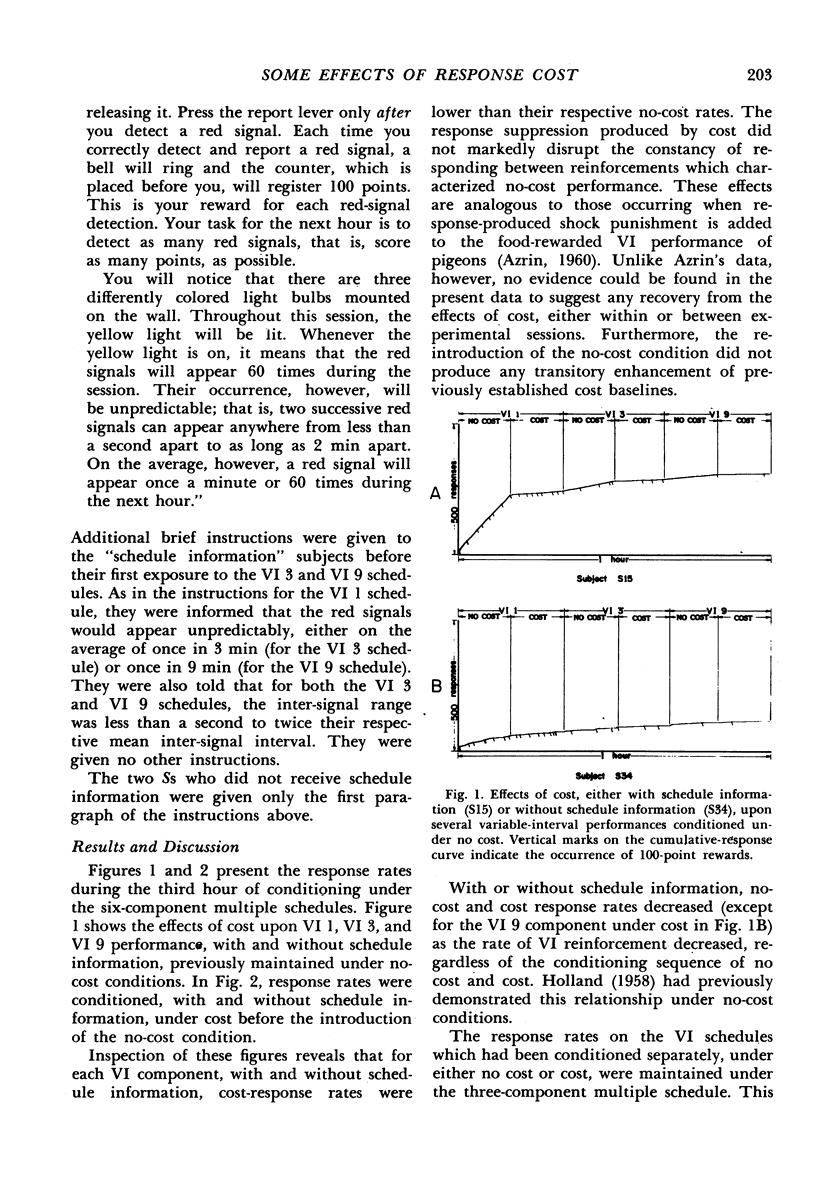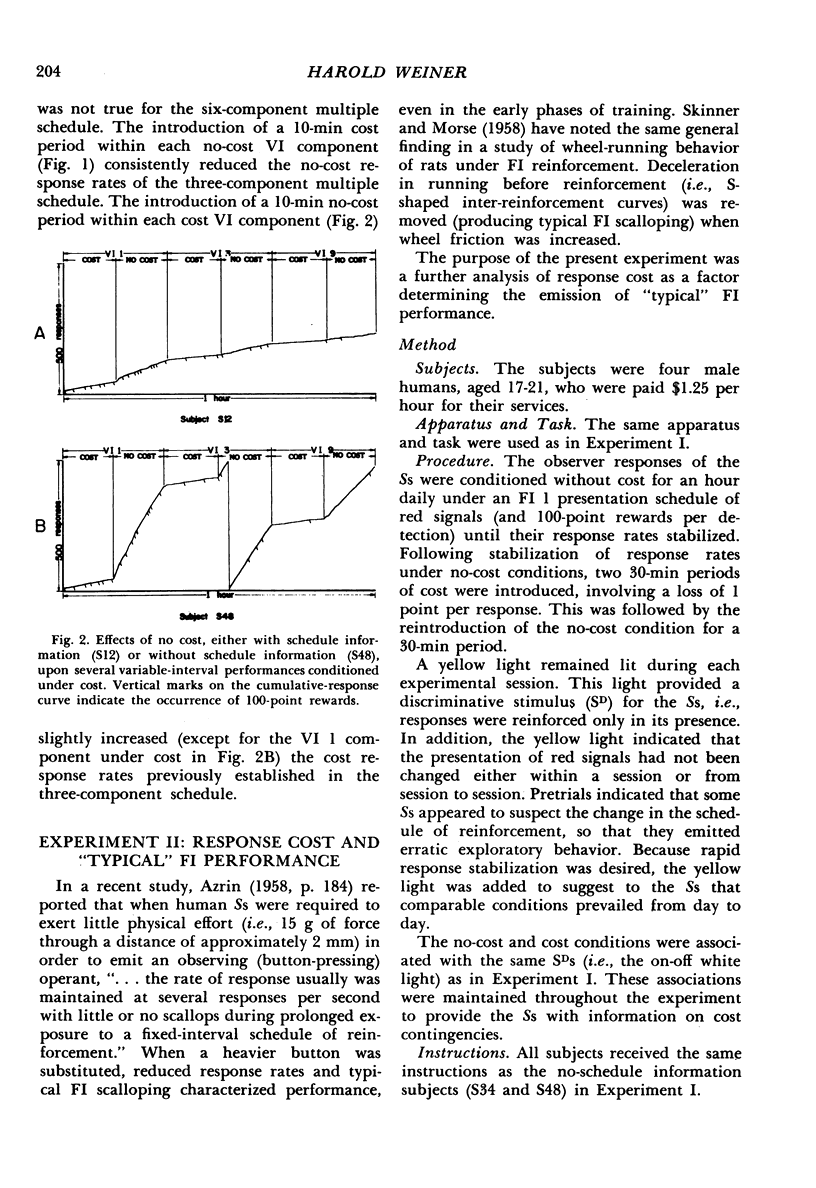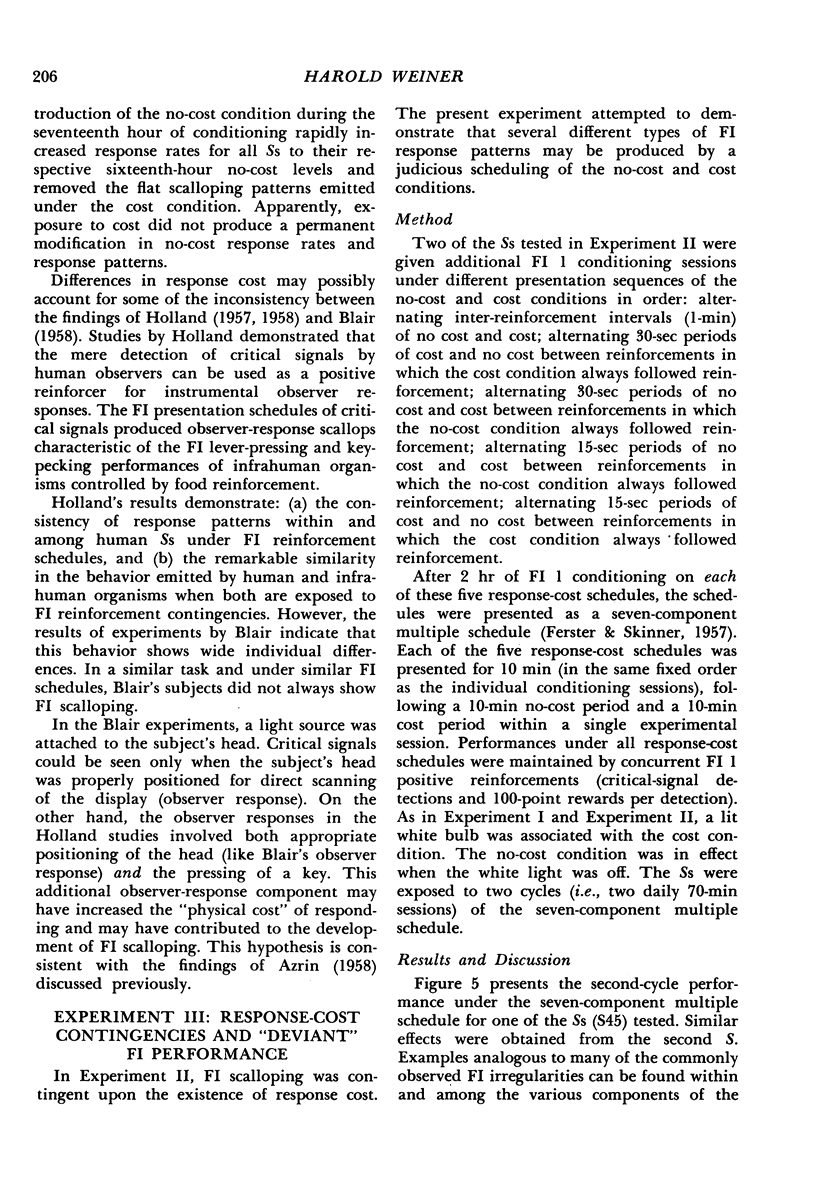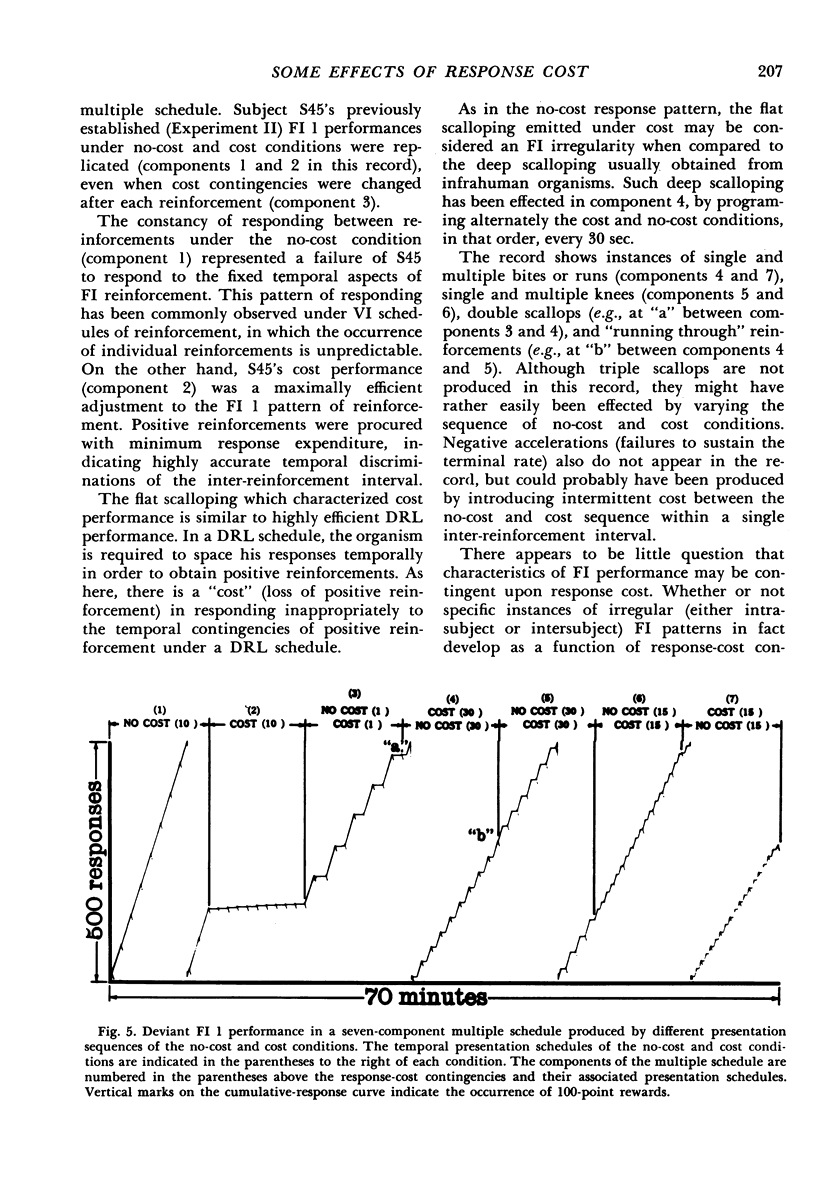Abstract
Three experiments are reported which investigated the effects of cost (point loss per response) upon human-observer responses maintained by VI and FI schedules of reinforcement (acquisition of points via critical-signal detections). (I) Cost attenuated VI response rates without substantially disturbing the constancy of responding, regardless of the presentation sequence of the no-cost and cost conditions. (II) FI scalloping appeared only under cost conditions. Under no cost, a constant rate of responding (similar to VI performance) characterized inter-reinforcement intervals. Exposure to cost did not prevent the recovery of previously established no-cost baselines. (III) FI irregularities, analogous to those commonly observed under FI reinforcement schedules, may be produced by different temporal presentations of the no-cost and cost conditions.
The results of all three experiments emphasize the importance of cost as a factor in the maintenance of human behavior on schedules of positive reinforcement.
Full text
PDF







Selected References
These references are in PubMed. This may not be the complete list of references from this article.
- AZRIN N. H. Effects of punishment intensity during variable-interval reinforcement. J Exp Anal Behav. 1960 Apr;3:123–142. doi: 10.1901/jeab.1960.3-123. [DOI] [PMC free article] [PubMed] [Google Scholar]
- Azrin N. H. Some Effects of Noise on Human Behavior. J Exp Anal Behav. 1958 Apr;1(2):183–200. doi: 10.1901/jeab.1958.1-183. [DOI] [PMC free article] [PubMed] [Google Scholar]
- BLAIR W. C. Measurement of observing responses in human monitoring. Science. 1958 Aug 1;128(3318):255–256. doi: 10.1126/science.128.3318.255. [DOI] [PubMed] [Google Scholar]
- HOLLAND J. G. Human vigilance: the rate of observing an instrument is controlled by the schedule of signal detections. Science. 1958 Jul 11;128(3315):61–67. doi: 10.1126/science.128.3315.61. [DOI] [PubMed] [Google Scholar]
- HOLLAND J. G. Technique for behavioral analysis of human observing. Science. 1957 Feb 22;125(3243):348–350. doi: 10.1126/science.125.3243.348-a. [DOI] [PubMed] [Google Scholar]
- Skinner B. F., Morse W. H. Fixed-interval reinforcement of running in a wheel. J Exp Anal Behav. 1958 Oct;1(4):371–379. doi: 10.1901/jeab.1958.1-371. [DOI] [PMC free article] [PubMed] [Google Scholar]


